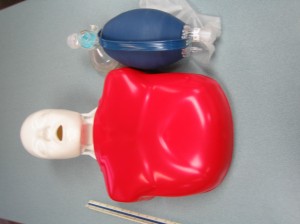
Getting trained in CPR has become all the rage, especially with emergencies happening left and right without any warning. We offer students some of the best CPR training programs in the US, in both Basic and Advanced Life Support. Located in over six cities, our training providers all offer the same high quality training courses as each other, and at the same fees. If you need CPR certification, sign up for one of our training courses and get the best training possible.
Enrolment details
Enrolment can easily be completed over the provider website, using the online application form. The form can be filled out at any time during the day, the same with applications being sent over e-mail. However, if you plan on enrolling in person or over the telephone, you can only do so during business hours.
Certification courses
Getting certified is easy with our providers. You can choose from eight different CPR training programs, three of which are re-certification classes.
- Heartsaver CPR (Basic Life Support) – 4 hours, for the public; teaches one-person CPR, defibrillation, and first aid
- Heartsaver CPR C (Basic Life Support) – 4.5 hours, for healthcare providers; teaches one-person cPR, defibrillation, and first aid
- Basic Life Support for HCPs – 4.5 hours; teaches one and two-person CPR and 2010 guidelines for BLS from the AHA
- Advanced Cardiac Life Support (Advanced Life Support) – 16 hours in 2 days; teaches medical management of cardiac arrest in an adult patient
- Pediatric Advanced Life Support (Advanced Life Support) – 14 hours in 2 days; teaches medical management of cardiac arrest in a pediatric patient
Certificates from any of our programs are valid for two years before expiration. They can be renewed through re-certification classes. Only rescuers whose certificates are still valid can qualify for them. Re-certification is offered for three of the programs above.
- Basic Life Support – 4 hours
- Advanced Cardiac Life Support – 5 to 6 hours
- Pediatric Advanced Life Support – 6 to 8 hours
Health status of the world
The World Health Organization periodically releases reports from investigation and research regarding the health status of the people living in the world. Non-communicable diseases, particularly cardiovascular disease, cancer, diabetes, and chronic lung disease, caused over 60 percent of the deaths worldwide in 2011. Cardiovascular diseases such as ischemic heart disease and stroke were the top two in the list of leading causes of mortality worldwide.
CVDs killed over 17 million people in the world during that time; that’s 3 in every 10 deaths. Out of these, 7 million people died from ischemic heart disease and 6.2 million from stroke. This makes it apparent that the need to be prepared for cardiac arrest should be everybody’s responsibility. Learning CPR is the first step in battling the complications of heart disease and stroke.
Basic Life Support teaches trainees how to keep the heart beating spontaneous after it has gone into arrest. Interventions such as chest compressions and rescue breaths help pump blood to the rest of the body during cardiac arrest. Advanced Life Support programs similarly focus on the same interventions, but add medical interventions such as medication and ventilatory support devices.
